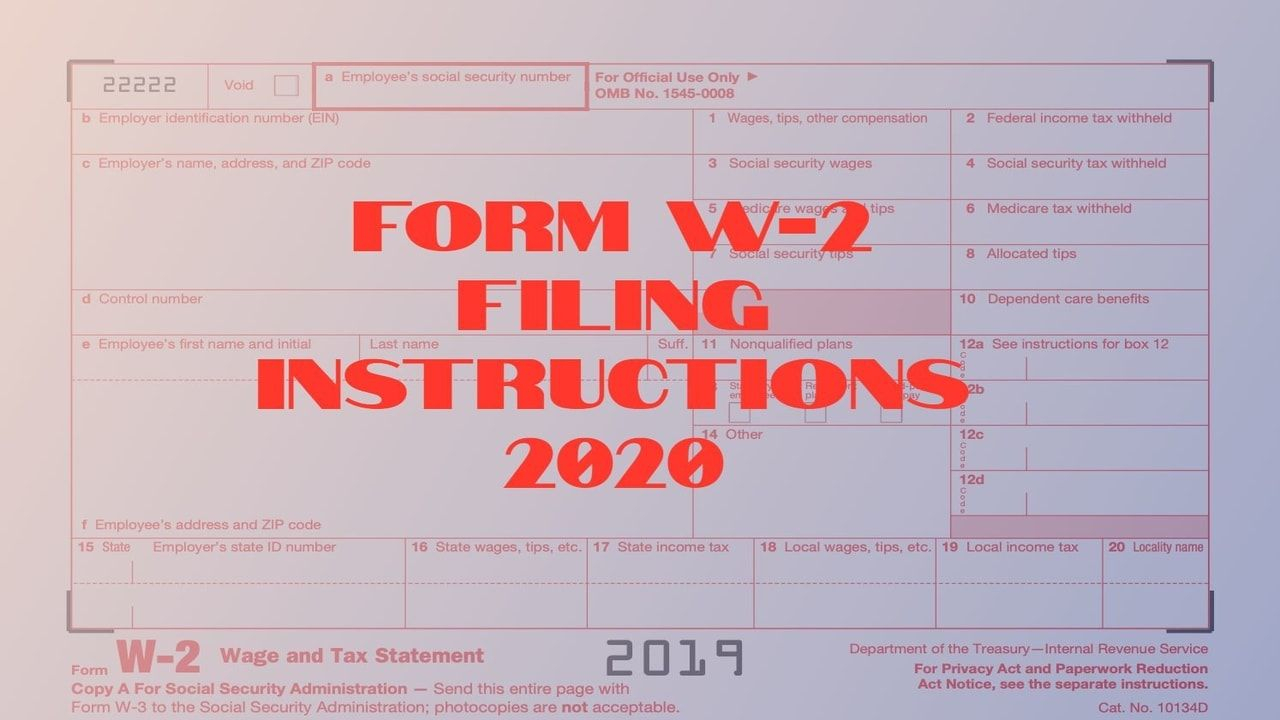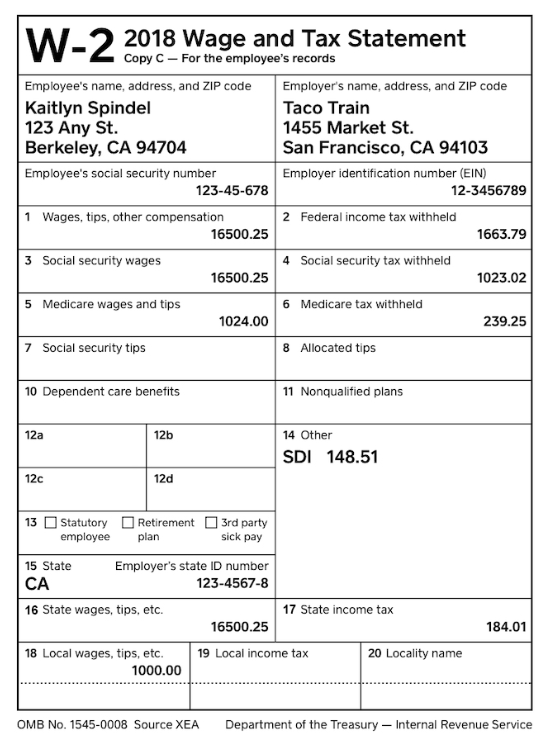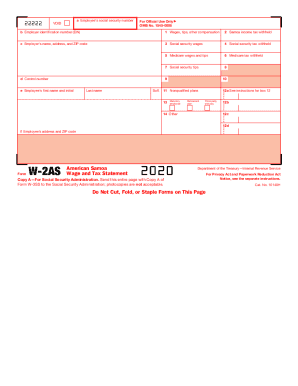1099 vs. W-2: What’s The Difference?

When it comes to taxation and employment, understanding the difference between a 1099 form and a W-2 form is crucial. These forms are used to report income, but they are applicable to different types of workers. Let’s dive deeper into the distinctions between the two.
Form W-2:

The W-2 form is typically issued to an employee by their employer. It reports the individual’s annual wages, salaries, and tips, along with any applicable taxes withheld. The employer is responsible for submitting a copy to the Internal Revenue Service (IRS) and providing a copy to the employee for tax filing purposes.
Form 1099:
The 1099 form is used to report income earned by independent contractors, freelancers, and other self-employed individuals. Unlike W-2 employees, these individuals are considered to be working on a contractual basis and are responsible for managing their own taxes. The form is issued by entities that have paid the independent contractor $600 or more in the tax year.
Key Differences:
1. Tax Withholding: One of the significant differences between a W-2 and a 1099 is tax withholding. W-2 employees have taxes withheld from their paychecks, which are paid directly to the IRS by the employer. On the other hand, independent contractors must manage and pay their tax liabilities themselves.
2. Employment Benefits: W-2 employees are often eligible for various employment benefits, such as health insurance, retirement plans, and paid time off. Independent contractors typically do not receive these benefits, as they are not considered regular employees of the company.
3. Employer-Employee Relationship: W-2 employees work under a direct employment relationship with their employers. They are provided with instructions, guidelines, and are often required to follow a specific schedule. Independent contractors, on the other hand, maintain their own business operations and have more autonomy over their work processes and schedules.
4. Social Security and Medicare Taxes: W-2 employees and employers are subject to Social Security and Medicare taxes, with each party contributing a portion of these taxes. Self-employed individuals who receive a Form 1099 are responsible for the full payment of these taxes.
5. Tax Filing: W-2 employees usually file their taxes using Form 1040 or 1040EZ. They can claim various deductions and tax credits available to them. Independent contractors, however, must file their taxes using Schedule C or the Form 1040 and report their business income and expenses.
In conclusion, understanding the differences between a 1099 form and a W-2 form is vital for both employers and workers. It ensures compliance with tax laws and helps individuals determine their tax responsibilities accurately. Whether you are a W-2 employee or an independent contractor, knowing the appropriate form that applies to you will allow you to fulfill your tax obligations effectively.
Example Of W2 Forms

The W2 form is a significant document used for reporting an individual’s wages and tax information to the Internal Revenue Service (IRS). Here is an example of what a typical W2 form looks like:
- Employer Information: The top section of the form includes details about the employer, such as the company name, address, and Employer Identification Number (EIN).
- Employee Information: The next section captures the employee’s information, including their name, address, and Social Security Number (SSN).
- Wages, Tips, and Compensation: This section provides a breakdown of the employee’s earnings for the year, including wages, tips, bonuses, and other forms of compensation. It also indicates the amount of federal income tax withheld.
- Social Security and Medicare Taxes: The W2 form includes the employee’s contributions to Social Security and Medicare taxes. These amounts are withheld from the employee’s paycheck throughout the year.
- State and Local Taxes: Depending on the state and local tax regulations, the W2 form may also include information about state and local income tax withholdings.
- Additional Information: Some W2 forms may include additional information, such as retirement plan contributions, health insurance premiums, or dependent care benefits provided by the employer.
It is essential to review the W2 form carefully to ensure accuracy. Any discrepancies or errors should be brought to the attention of the employer or Human Resources department promptly.
Understanding 2018 W-2 Forms

The W-2 form is a crucial document that employers provide to their employees and the Internal Revenue Service (IRS) at the end of each tax year. It summarizes an individual’s earnings and taxes withheld throughout the year. Here is a comprehensive guide to understanding the 2018 W-2 forms:
- Employee Information: The top section of the form includes the employee’s name, address, and Social Security Number (SSN).
- Employer Information: The employer’s name, address, and Employer Identification Number (EIN) are displayed in this section.
- Wages, Tips, and Other Compensation: This section provides a breakdown of the employee’s earnings, including regular wages, tips, bonuses, and other taxable compensation.
- Federal Income Tax Withholding: The W-2 form displays the total amount of federal income tax withheld from the employee’s earnings throughout the year.
- Social Security and Medicare Taxes: This section includes the employee’s contributions to Social Security and Medicare taxes, as well as any additional Medicare taxes.
- State and Local Taxes: If applicable, the W-2 form may also include information about state and local income tax withholdings.
- Retirement Contributions and Benefits: Some W-2 forms may document the employee’s contributions to retirement plans, such as a 401(k), as well as any employer-provided pension or retirement benefits.
- Other Deductions and Benefits: The W-2 form may contain information about additional deductions and benefits, such as health insurance premiums or flexible spending account contributions.
It is crucial to review the W-2 form carefully to ensure accuracy. Any discrepancies should be reported to the employer or Human Resources department promptly. Additionally, employees should retain a copy of their W-2 forms for their personal tax records.
W-2 Reporting Requirements

The W-2 form is a critical document used for reporting an employee’s wages, tips, and other compensation to the Internal Revenue Service (IRS). There are specific reporting requirements that employers must adhere to when preparing and distributing W-2 forms. Here are the W-2 reporting requirements for 2020:
- Deadline for Distribution: Employers must provide W-2 forms to their employees no later than January 31st of the year following the tax year. This deadline ensures that employees have sufficient time to prepare and file their tax returns.
- Copy Submission: Employers must submit Copy A of the W-2 forms to the Social Security Administration (SSA) by January 31st. They must also provide a copy of Form W-3, which summarizes the employee’s annual earnings, to the SSA.
- Employee Copies: Employers must provide each employee with Copy B (Employee’s Copy) of the W-2 form. This copy includes the employee’s wage and tax information for the year.
- Retaining Copies: Employers are required to retain Copy D (Employer’s Copy) of the W-2 form for their records. These records should be kept for a minimum of four years, as they may be requested by the IRS for review.
- Electronic Filing: Employers who issue 250 or more W-2 forms are required to file them electronically with the SSA. This requirement ensures accurate reporting and streamlines the processing of tax returns.
By following these reporting requirements, employers can ensure that their employees receive accurate W-2 forms and that their tax reporting obligations are fulfilled.
2021 Form IRS W-2AS Fill Online, Printable, Fillable, Blank

The 2021 Form IRS W-2AS is the official document used for reporting wage and tax information for American Samoa residents who are not subject to federal income tax withholding. Here’s everything you need to know about the W-2AS form:
- Employee Information: The top section of the form captures the employee’s name, social security number, and address.
- Employer Information: This section includes the employer’s name, address, and employer identification number (EIN).
- Wages and Tips: The W-2AS form displays the employee’s wages, salaries, and tips earned during the tax year.
- Federal Income Tax Withheld: If applicable, the form lists the amount of federal income tax withheld from the employee’s wages.
- Additional Taxes: The W-2AS form indicates any additional taxes withheld, such as Medicare and social security taxes.
- State Income Tax: American Samoa does not have its own income tax, so this section is typically left blank.
- Personal Exemptions: If the employee is eligible for any personal exemptions, they may be reflected on the W-2AS form.
- Other Information: The form may include additional information, such as retirement plan contributions or other benefits provided by the employer.
It is essential for both employers and employees in American Samoa to correctly complete the W-2AS form and ensure its accuracy. This form is crucial for individuals to accurately report their income and comply with American Samoa tax laws.
In conclusion, understanding W-2 forms is vital for both employers and employees. These forms play a crucial role in accurately reporting wages, tips, and tax information to the appropriate tax authorities. By complying with the relevant reporting requirements and reviewing the forms for accuracy, individuals can fulfill their tax responsibilities effectively.
Sources:
- Cloud Friday Accounting: W2 Form Image
- Calendar Printables: Form W-2 Image
- Formstax: W-2 Laser Tax Form Copy C
- EXAMPLEPAPERS: Example of W2 Forms Image
- Stubcheck: W2 Form 2021 Online
- FillableTaxForms: Create a Free W2 Form
- PDFfiller: W2 Form - 2019 - 2020 sample
- Patriot Software: W-2 Reporting Requirements
- PDFfiller: 2021 Form IRS W-2AS Fill Online, Printable, Fillable, Blank